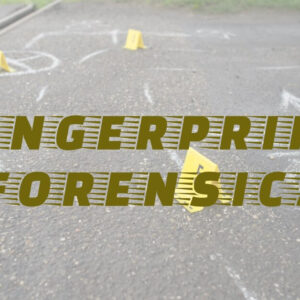Fingerprints are like nature’s signature for each person, a unique pattern on our fingertips. In crime-solving, these patterns are crucial for identifying individuals. Our fingerprints are formed before birth and remain the same throughout our lives. They are like a code on our skin, waiting to be decoded.
This blog post explores the science behind fingerprint identification, including the patterns, technology used to study them, and the principles that make them a powerful tool for solving mysteries. From traditional ink-and-paper methods to modern scanners, technology has combined with the uniqueness of our fingerprints to create a reliable system for identifying individuals.
Get ready to learn about fingerprint anatomy, high-tech scanning, and the magic that makes each fingerprint special. It’s a story of science, technology, and the unique imprints on our fingertips.
Anatomy of Fingerprints
The complexity and uniqueness of fingerprints make them a highly reliable form of identification. By delving into the anatomy of fingerprints, we can better understand the intricate patterns that form on the skin’s surface, particularly on the fingertips.
The combination of genetic factors, fetal development, and environmental factors influence these patterns. Let’s now delve into the key elements that contribute to the anatomy of fingerprints:
1. Dermal Ridges
The skin’s raised portions, called dermal ridges, are responsible for fingerprint patterns. These unique patterns are consistent throughout a person’s life and are formed by the uneven growth of the skin’s dermal layer before birth.
2. Ridge Patterns
Three main ridge patterns can be found in fingerprints: loops, whorls, and arches. These patterns are determined by how the ridges flow and interact with each other.
Loops have ridges that enter from one side and exit from the same side, whorls have circular or spiral patterns, and arches have ridges that enter from one side and exit on the opposite side.
3. Minutiae Points
Tiny details in the ridge patterns, such as ridge endings and bifurcations, are what give each fingerprint its uniqueness. The specific layout of these details creates a one-of-a-kind fingerprint template.
4. Pores and Sweat Glands
Tiny openings in the ridges enable sweat to be released, making up pores. The pattern, density, and layout of sweat glands, in conjunction with the distribution of pores, enhance the distinctiveness of fingerprints. These elements introduce another level of intricacy to the unique features of each print.
5. Friction Ridge Skin
The skin on our fingertips, palms, and soles is known as friction ridge skin because of its raised ridge patterns. This special type of skin helps us have a better grip and reduces the chances of slipping. The distinct fingerprint patterns are formed thanks to the unique structure of friction ridge skin, which plays a vital role in this process.
6. Genetic and Environmental Influences
While genetics play a significant role in determining the overall pattern of fingerprint ridges, environmental factors during fetal development also contribute to the specific characteristics of an individual’s prints. The interplay between genetic predisposition and external influences results in a truly individualized fingerprint.
7. Developmental Stability
Fingerprint anatomy is truly fascinating due to its consistent development. The unique ridge patterns start to take shape in the fetus at approximately the 10th week of pregnancy and remain remarkably stable throughout an individual’s entire life. This stability plays a crucial role in the dependability of fingerprints as a lifelong means of identification.
Principles Behind Uniqueness of Fingerprints
The unparalleled individuality and permanence of fingerprints are rooted in the intricate details of ridge patterns, ridge count, spacing, pore distribution, and the stability of developmental features. These factors play a crucial role in forming the foundation for the reliability of fingerprints in forensic science.
1. Individual Ridge Patterns
Fingerprint uniqueness is primarily determined by the individual’s ridge patterns. The presence of loops, whorls, and arches, as well as the unique arrangement and flow of ridges, results in a fingerprint that is exclusive to each individual. This distinct feature highlights the individuality of each person, even among identical twins who have the same genetic composition.
2. Ridge Count of Spacing
In addition to the general pattern, the specific ridge count and the distance between ridges play a key role in making fingerprints unique. Each person has a different number of ridges in a particular area, and the arrangement of these ridges adds to their distinctiveness. This level of detail enables forensic specialists to accurately differentiate between individuals.
3. Pore Distribution
The unique presence and distribution of pores in the ridges of fingerprints enhance their individuality. Pores, along with sweat gland ducts, are distinct for every individual and play a role in forming the overall pattern. The density and arrangement of these pores within the ridge structures offer forensic analysts extra characteristics to aid in identification.
4. Developmental Stability
Fingerprints are a dependable means of identification due to their developmental stability, which is one of the key principles. These unique patterns are formed during fetal development and remain unchanged throughout a person’s entire life.
This unwavering stability guarantees that a person’s fingerprint at birth will be identical to their fingerprint in old age, making it a reliable and consistent identifier throughout their lifespan.
5. Persistent Over Time
The uniqueness of fingerprints is greatly influenced by their ability to remain unchanged over time. Despite external factors like injury or aging, the core ridge patterns of fingerprints remain unaltered. Although the skin may undergo slight modifications, the fundamental structure of the fingerprint remains intact.
This enduring quality enables law enforcement to depend on historical fingerprint records for identification purposes.
Technology and Methods Used in Fingerprint Identification
The field of fingerprint identification has been completely transformed by advancements in technology. These advancements have brought about more precise and effective ways of capturing, analyzing, and matching fingerprints.
The transition from traditional ink and paper techniques to modern digital scanning has greatly enhanced the dependability and efficiency of fingerprint identification processes. In the following section, we will explore the technology and methods utilized in fingerprint identification in greater detail.
1. Digital Scanning Technology
Today, fingerprint identification starts with digital scanning devices that capture detailed images of the ridges and valleys at our fingertips. These devices utilize three main types of scanning technologies.
- Optical Scanners: It utilizes light to capture the fingerprint image. The scanners shine light on the finger and then use the reflected light to generate a digital version of the fingerprint.
- Capacitive Scanners: Count on the skin’s electrical conductivity. When the finger is placed on the scanner, the capacitive sensors pick up on the changes in electrical conductivity caused by the ridges and valleys.
- Ultrasound Scanners: Use sound waves to generate a 3D representation of the fingerprint. This innovative technology doesn’t just capture the outer characteristics, but also the hidden features beneath the skin.
2. Minutiae Points and Fingerprint Templates
After capturing the fingerprint image, the attention turns towards the minutiae points, which are distinct ridge features. These points consist of bifurcations, where a ridge divides into two, and ridge endings. Utilizing these minutiae points, a one-of-a-kind fingerprint template is generated, representing the fingerprint through mathematical calculations.
- Ridge Count and Orientation: Besides small details, the quantity and direction of ridges in a particular area are essential for developing a complete fingerprint template.
3. Automated Fingerprint Identification Systems (AFIS)
Fingerprint templates are securely stored in databases, and the comparison process is made easier with the help of AFIS. AFIS, which stands for Automated Fingerprint Identification System, is a computerized system that efficiently matches fingerprints against a large database of templates. This system quickly identifies potential matches, greatly speeding up the identification process.
- Pattern Matching Algorithms: AFIS utilizes advanced pattern matching algorithms to compare minutiae points, ridge counts, and other characteristics, guaranteeing a remarkable level of precision in identifying potential matches.
4. Biometric Matching and Verification
Fingerprint biometric systems are widely used for security and identification purposes. These systems match captured fingerprints with stored templates, which is commonly observed in access control systems, mobile devices, and other applications that require fingerprint verification.
- Live-Scan Devices: These gadgets can capture fingerprints instantly and convert the image into digital format right away, enabling quick comparison and verification.
5. Forensic Examination and Expert Verification
AFIS offers a speedy and automated matching process, but the final verification heavily relies on the expertise of forensic professionals. These experts visually inspect potential matches to guarantee the precision and dependability of the system’s outcomes.
This particular stage holds immense importance in legal proceedings, where the credibility of fingerprint evidence may come under scrutiny.
Conclusion
The realm of dermatoglyphics takes us on a captivating expedition into the realm of fingerprint identification. With the continuous advancement of technology, forensic science is reaping the rewards of more precise and effective techniques for analyzing fingerprints.
The enduring distinctiveness of fingerprints renders them an indispensable asset in criminal investigations, enabling law enforcement to establish precise connections between individuals and crime scenes.






